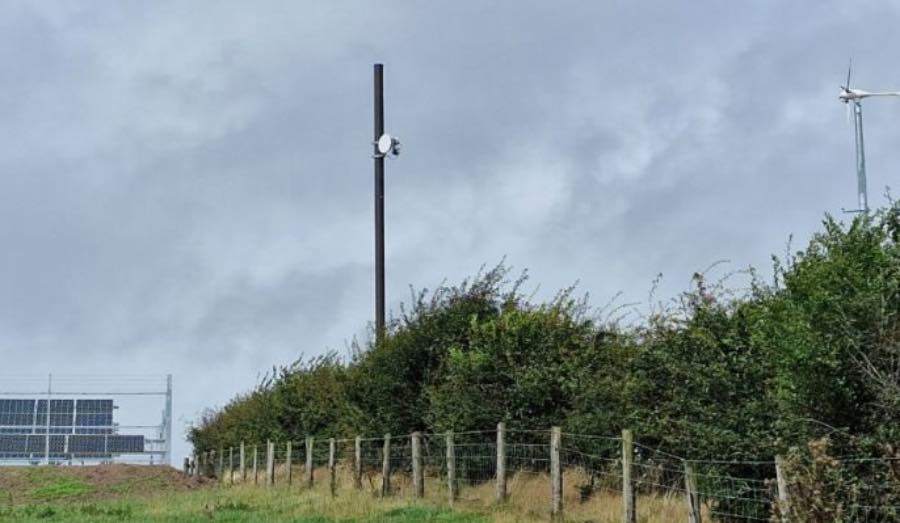
BT Group has switched on its first self-powering mobile site, located in the UK’s Shropshire Hills, with approximately 70 per cent of its energy needs expected to be generated by the on-site solar panels and wind turbine – the site was identified through an environmental assessment which calculated its viability for renewable power. Power is generated through a combination of solar and wind energy which is then used to charge the batteries which power the on-site mast.
In the event of there being insufficient renewable energy source available and the battery power being fully discharged, a generator powered by Hydrotreated Vegetable Oil (HVO) fuel acts to simultaneously provide back-up power to the mast and charge to the batteries, ensuring the site continues to deliver connectivity to customers. HVO is itself classed as a green fuel, produced as it is from a variety of waste and residual oils.
BT Group expects the site to deliver approximately 17,000kWh of wind and solar energy per year – the equivalent of 100,000 hot showers – as well as cost savings upwards of £10k. While the Shropshire Hills site serves as a trial, BT Group has already identified hundreds of additional locations which have the potential to derive much of their power from on-site renewable sources, in particular in coastal or hilly locations.
Greg McCall, Chief Networks Officer, BT Group, said: “Delivering ubiquitous coverage is critically important in an age where connectivity has never been so central to everyday life, but it absolutely must be done in a responsible and sustainable manner. It’s paramount that we increase the energy-efficiency of our networks, and so we’re really excited about the potential of self-powering sites in enabling us to meet both our sustainability and connectivity ambitions.”
With an ambition to become a net zero business by 2031, improving the energy efficiency of its networks – which account for around 89 per cent of its total energy consumption – is a major priority for BT Group. The self-powering site is the latest innovation aimed at addressing this and follows the roll-out of energy-saving cell-sleep technology across its RAN estate earlier this year, as well as the successful retirement of its legacy 3G network.
